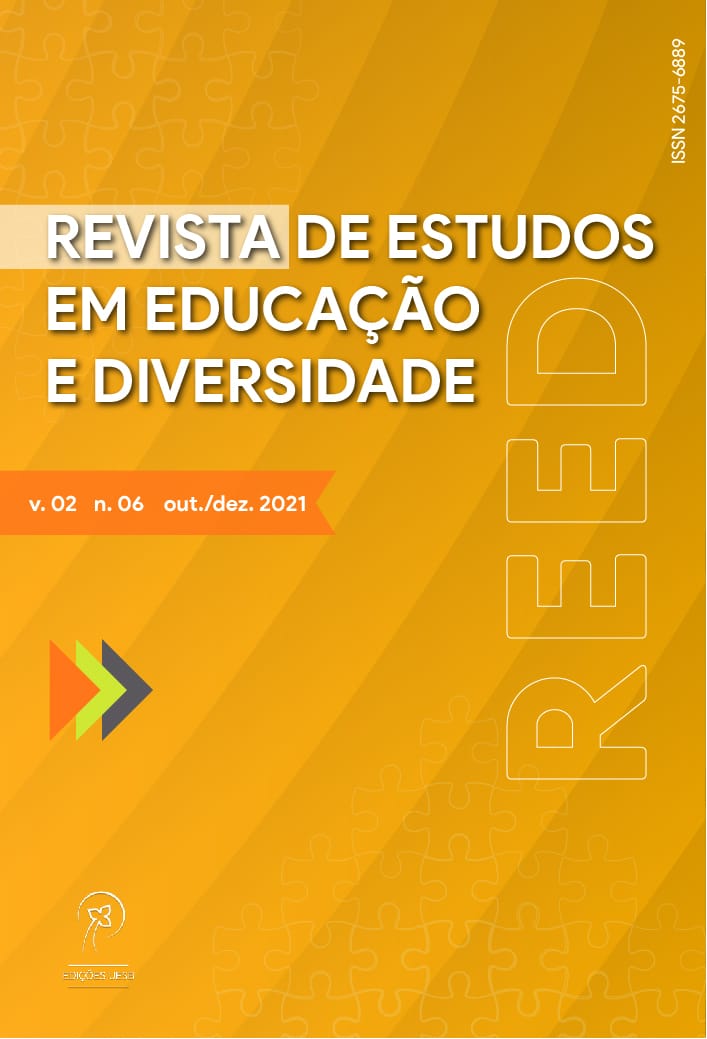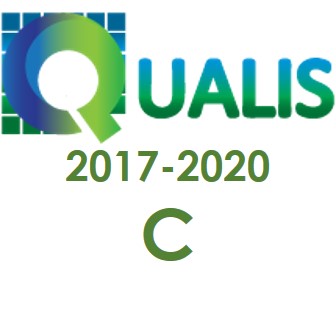PICTURE BOOKS: BETWEEN PATHS AND POSSIBILITIES IN THE TEACHING AND LEARNING PROCESS OF CHILDREN
DOI:
https://doi.org/10.22481/reed.v2i6.9202Keywords:
Picture book, Teaching and learning, ChildAbstract
The present article approaches the picture book as a guiding instrument in the teaching and learning processes of children, in a perspective of fluent learning of literature by children, highlighting its importance in the child’s development. We also deal with the picture book as a methodological instrument that favors the development of the teacher’s work in the teaching and learning process if it is meaningful for the child. The research also included the analysis of the picture book by Ruth Rocha, “The boy who learned to see”, and the book by Elias José, “The stories and the places”. We chose these books because they bring images portraying everyday life, and because they are used in public schools. The theoretical foundation includes authors such as Bom-Fim (2009), Freire (1989), José (2002), and other authors from the field of education, which allows us to discuss picture books as a guiding means for the development of language and reading of the child based on the visualization of images. Based on the analyzes, we realize that the proper use of illustrations in the school environment can be a passport to the world of word reading, text production, and differentiated narratives.
Downloads
References
BELMIRO. Célia Abicalil. A imagem e suas formas de visualidade nos livros didáticos de Português. Educação & Sociedade, ano XXI, n.72, ago, 2000. Disponível em: https://www.scielo.br/j/es/a/cyzHV8Vj4WkvKc7RC4G69DS/?format=pdf&lang=pt. Acesso em: 20 dez. 2021.
BOM-FIM. Maria Tereza. O Livro de Imagem: um (pré) texto para contar histórias. Alma de artista: Imperatriz, MA, 2009.
BUORO. Amélia Bueno. Olhos que pintam: a leitura da imagem e o ensino da arte. 2 ed. São Paulo: Educ/FAPESP/Cortez, 2003.
CAMARGO, L. Ilustração do livro infantil. Belo Horizonte: Lê, 1995.
CUNHA, Aline Caldas. Livro de Imagem: aprender a ver para aprender a ler. 2005. Dissertação (Mestrado em Linguística) - Pós-graduação em Letras, Universidade Federal de Pernambuco, Recife, PE, 2005. Disponível em: https://repositorio.ufpe.br/handle/123456789/7978. Acesso em 21 dez. 2021.
FREIRE, Paulo. A Importância do Ato de Ler: em três artigos que se completam. Cortez: São Paulo, 1989.
JOSÉ, Elias. As histórias e os lugares. São Paulo: Paulus, 2002.
LOPES. Celi Espasandin. A educação estocástica na infância. Revista Eletrônica de Educação, São Carlos, SP, v. 6, n. 1, p.160-174, maio 2012. Disponível em: http://www.reveduc.ufscar.br/index.php/reveduc/article/view/396. Acesso em: 20 maio 2018.
MASSCHELEIN, Jan. E-ducando o olhar: a necessidade de uma pedagogia pobre. Educação e Realidade, v. 33, n. 1, p. 35-47, 2008. Disponível em: https://www.redalyc.org/pdf/3172/317227051005.pdf. Acesso em 21 dez. 2021.
NUNES, Marília Forgearini. Livro de Imagem: possibilidade de educação do olhar. In: SEMINÁRIO ANPED SUL, 9., 2012, Caxias do Sul, RS. Anais [...]. Caxias do Sul, RS: UCS, 2012, p. 1-14. Disponível em: http://www.ucs.br/etc/conferencias/index.php/anpedsul/9anpedsul/paper/view/374/755. Acesso em: 18 jan. 2017.
OLIVEIRA. Rui. Pelos Jardins Boboli: reflexões sobre a arte de ilustrar livros para crianças e jovens. Rio de Janeiro: Nova Fronteira, 1999.
ROCHA, Ruth. O menino que aprendeu a ver. São Paulo: Salamandra, 2013.
SPENGLER, Maria Laura Pozzobon. Literatura Infantil: a palavra e a imagem se entrelaçando na história. Leitura: Teoria & Prática, v. 29, n. 56, p. 36-43, 2011. Disponível em: https://ltp.emnuvens.com.br/ltp/article/view/55/54. Acesso em: 18 de jan. 2017.
Downloads
Published
How to Cite
Issue
Section
License
Copyright (c) 2021 Revista de Estudos em Educação e Diversidade - REED

This work is licensed under a Creative Commons Attribution 4.0 International License.
You are free to:
Share - copy and redistribute the material in any medium or format; Adapt - remix, transform, and build from the material for any purpose, even commercially. This license is acceptable for Free Cultural Works. The licensor cannot revoke these freedoms as long as you follow the terms of the license.
Under the following terms:
Attribution - You must appropriately give credit, provide a link to the license, and indicate if any changes have been made. You may do so in any reasonable way, but not in a way that suggests that you or your use is endorsed by the licensor.
There are no additional restrictions - You cannot apply legal terms or technological measures that legally restrict others to make any use permitted by the license.






